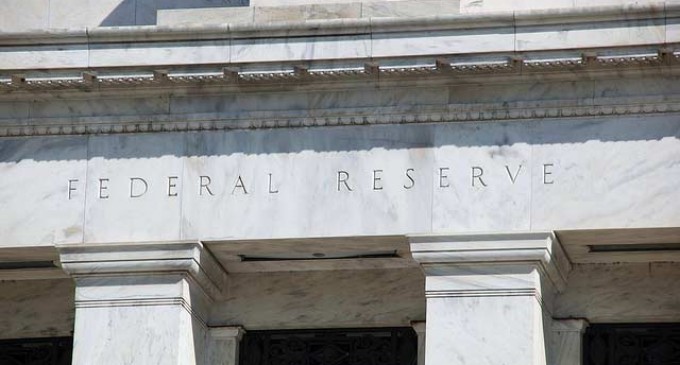
For most American citizens, it can be a struggle to work and save and to know where the economy is headed. And it turns out that most of us have no control whatever with our future financial security as the government manipulates the market and causes the disruptions that can shrink the value of our savings in an instant.
A recent regression analysis by economist Brian Barnier shows how 93% of the market has been determined by the Federal Reserve quantitative easing (essentially printing fiat money to “buy” bonds with no backing of actual GDP), which has created a completely artificial construct regarding the health of our economy.
The bull market just celebrated its seventh anniversary. But the gains in recent years – as well as its recent sputter – may be explained by just one thing: monetary policy.
The S&P 500 (^GSPC) doubled in value from November 2008 to October 2014, coinciding with the Federal Reserve Bank’s “quantitative easing” asset purchasing program. After three rounds of “QE,” where the Fed poured billions of dollars into the bond market monthly, the Fed’s balance sheet went from $2.1 trillion to $4.5 trillion.
This isn’t just a spurious correlation, according to economist Brian Barnier, principal at ValueBridge Advisors and founder of FedDashboard.com. What’s more, he says previous bull runs in the market lasting several years can also be explained by single factors each time.
More graphic summaries on page 2:


Vote trump
http://www.globalresearch.ca/who-owns-the-federal-reserve/10489
Shocker!
Been saying this all along
But if you do speak out against the international bankers, you could get in trouble with the Anti-Defamation League — that’s exactly what they’re for! The ADL was formed in 1913, the same year as the Federal Reserve. So it’s not so easy.
It is too late. They have control and they will take over America and it will be in the NWO.
All contrived by govt cash
Rothschild’s, ding ding ding ding ding
In 1965 a man could support a family of 4 on 100 dollars a week Not anymore The dollar has lost close to 90% of its buying power over the last 50 years Thanks to the federal reserve. http://www.manhattancalumet.com
Have you ever noticed how most of our industry jobs have been outsourced, yet there is a steady influx of people coming in? Meanwhile, the cost of goods and services is steadily rising to astronomical levels. The collapse of America is by design, and it is coming.